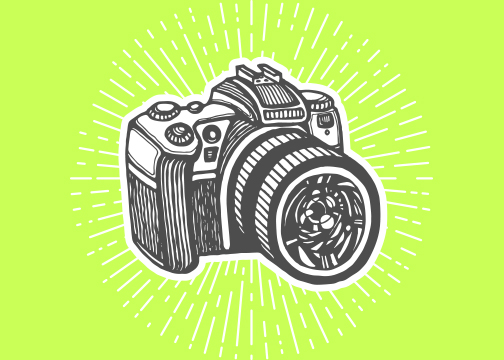
First things first. DSLR stands for digital single lens reflex which are high performance cameras traditionally used by professional photographers but which are increasingly used by photography enthusiasts thanks to enhanced user friendly technology. With so many choices available in the market today, deciding which one to choose can be mind boggling. With that in mind Canon Middle East, the world’s leading innovator of imaging products and solutions, has put together a guide on what to look for when buying a DSLR.
1. Price: DSLR cameras are more affordable nowadays with brands such as Canon offering great starter DSLRs for the enthusiastic amateur to highly professional camera by the EOS range. Another factor to take into account when purchasing a DSLR is the cost involved for additional equipment such as:
• Lenses: Can be tailored to your photographic requirements, i.e. if you are interested in landscape photography you will need a wide angle lens while if you are more interested in taking wildlife or sports shots then you may require a telephoto lens.
• Batteries: All models will come with one but if you are travelling it’s a good idea to always carry a spare.
• Memory Cards: Most serious photographers upgrade their memory cards to at least a 1 gigabyte card which allows you to take more hi resolution images before needing to delete.
• Filters: Filters can be used to manipulate the light that enters the camera. Filters are very useful for creating effects such as soft-lighting or warmer colours.
2. What will you use it for? It is well worth asking yourself this question up front, as it will help you think through the type of features and accessories you’ll need. Whether you’re a beginner, semi professional or a professional photographer Canon’s EOS camera’s range has a wide variety of camera’s to offer with basic features/functions.
3. Resolution: ‘How many megapixels does it have’ is a question that is often one of the first to be asked about a new camera. Megapixels come into play as you consider how you’ll use your images. If you’re looking to print enlargements then more can be good — if you’re just going to print in small sizes or use them for e-mailing friends then it’s not so crucial. Canon’s EOS series offers a wide range of resolution to suit your needs.
4. Added Value Features: DSLRs can offer a wide array of value added features, so it is always worth remembering what you hope to get out of your photography before investing in additional technology features.
• Burst Mode: Is the ability to shoot a burst of images by just holding down the shutter release — great for sports and action photography. DSLRs vary both in the number of frames that they can shoot per second as well as how many images they can shoot in a single burst.
• Maximum Shutter Speed: Most DSLRs will have a decent range of speeds available but some will have impressive top speeds which will be very useful if you’re into sports or action photography.
• ISO Ratings: A camera's ISO function sets the light sensitivity of the camera's image sensor. A lower ISO setting is used when capturing overly bright scenes, since it reduces the light sensitivity of the image sensor. This is ideal when shooting at the beach, on a ski slope, or under the midday sun. A higher ISO setting is often used when shooting under dimmer conditions .
• LCD Size: This feature can be important when you wish to review your pictures. The larger the LCD, the easier it will be to view your pictures after you take them, and to choose if you wish to keep them.
• Dust Protection: The EOS Integrated Cleaning System is Canon´s technology for minimizing the sensor dust characteristic of digital SLR cameras, which also includes software processing — something that will prove invaluable for Gulf photographers.
• Flash: Once upon a time all photographers were tied to the light source available to them, but with ongoing flash development, photographers are able to bring a portable light source with them, improving both range and overall photographic results. — [email protected]